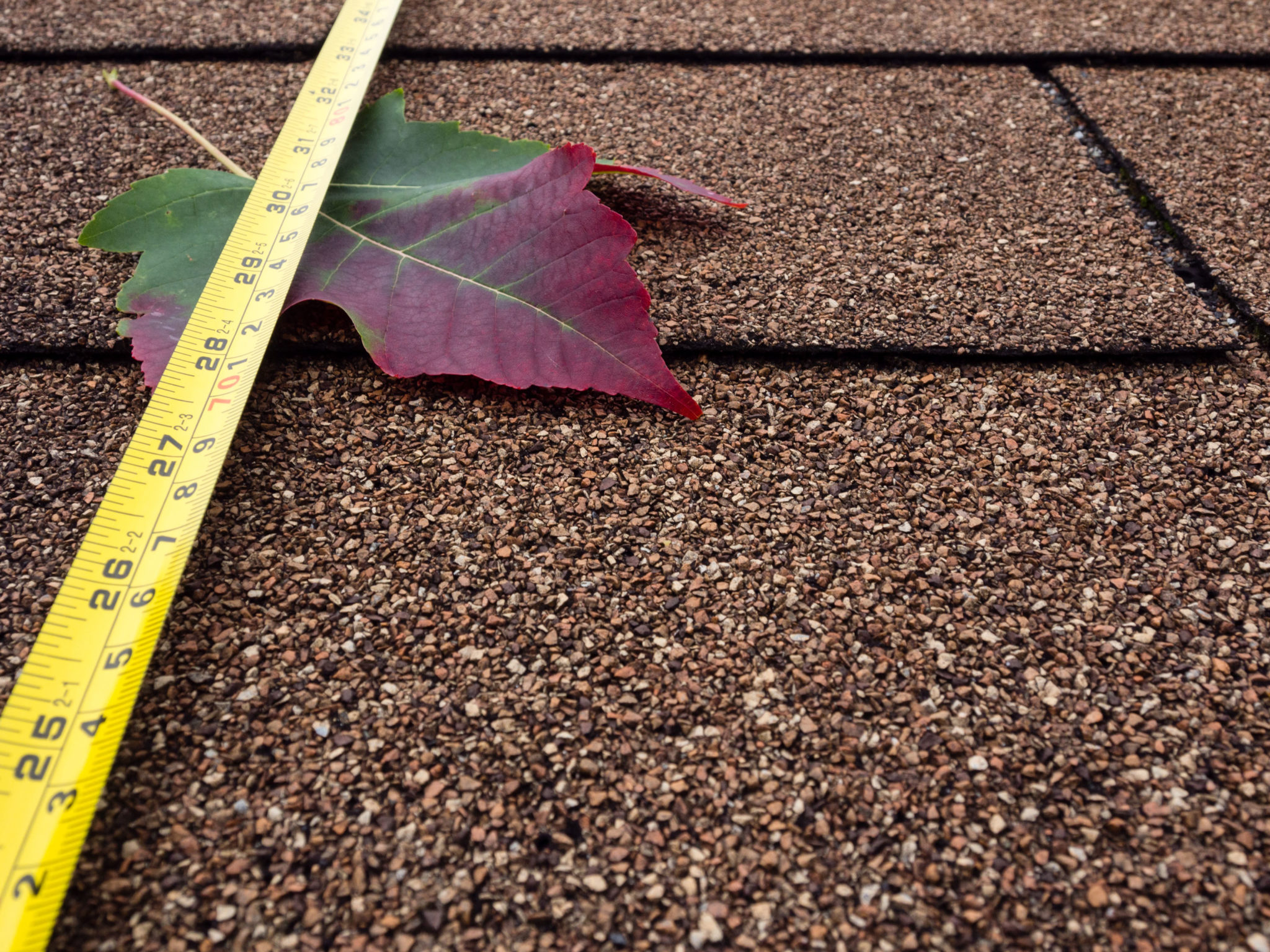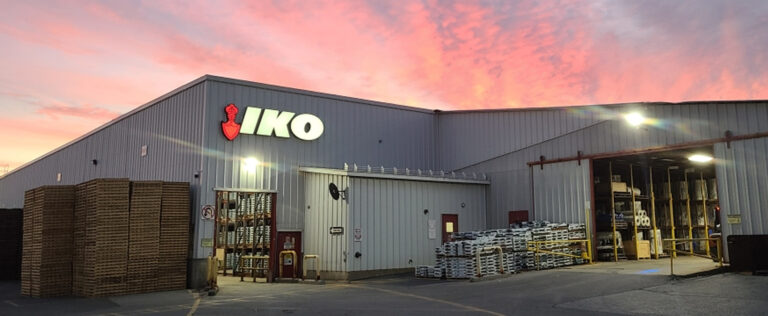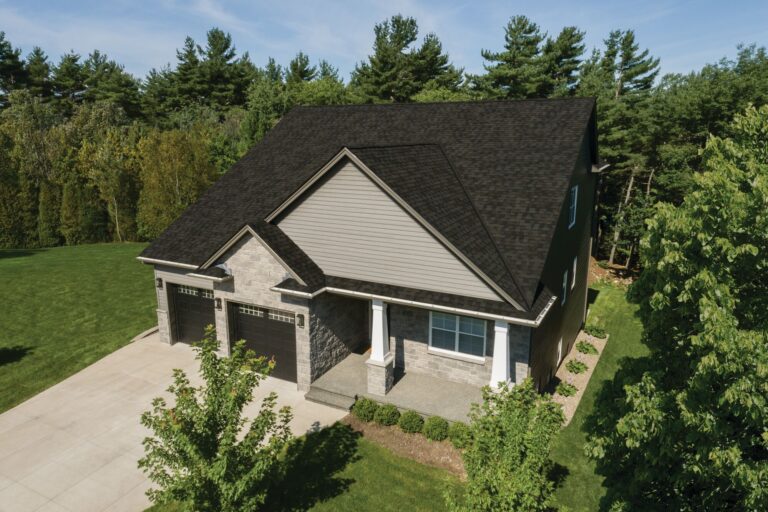How Many Shingles Do I Need for my Roof?
Tips For Calculating Roof Area So You’ll Know How Many Bundles Per Square You’ll Need For Roof Area Coverage
So you need a new roof, whether it’s to adorn your newly built home or to replace your existing roof. Like most North Americans, you’ve wisely decided to go with asphalt shingles due, in large part, to their vast range of styles and color blends. Like most of your neighbors, you plan to have the shingles installed by a professional roof contractor who will handle all the material calculations; however, the information below will help you understand how to estimate the amount of shingles and accessory materials you need for your roof.
Calculating how many shingles you need for your roof is very similar to calculating how much carpet you need for your floors or how much wallpaper you need for your walls; simply determine the area of the roof and divide by the area covered by each package of shingles.
Sounds simple, right? The only hard part is getting the actual measurements, and there are various ways to do this. Most likely, the roofer will physically get on the roof and, using a good old-fashioned tape measure, measure the areas of all the various roof sections and total them together. Of course, if the house is a new construction, these values will be readily available from the architectural drawings.
Another rule of thumb that can give you a ballpark estimate of the roof area on newly built roofs is to look at the number of sheets of plywood used for the roof deck. Each plywood sheet is 4 x 8 feet or 32 square feet, which coincidentally is almost exactly equivalent to the coverage of one bundle of traditional three-tab shingles. If it’s a re-roof project and you have access to the original paperwork from the last shingle installation, that may be useful in showing the roof area.
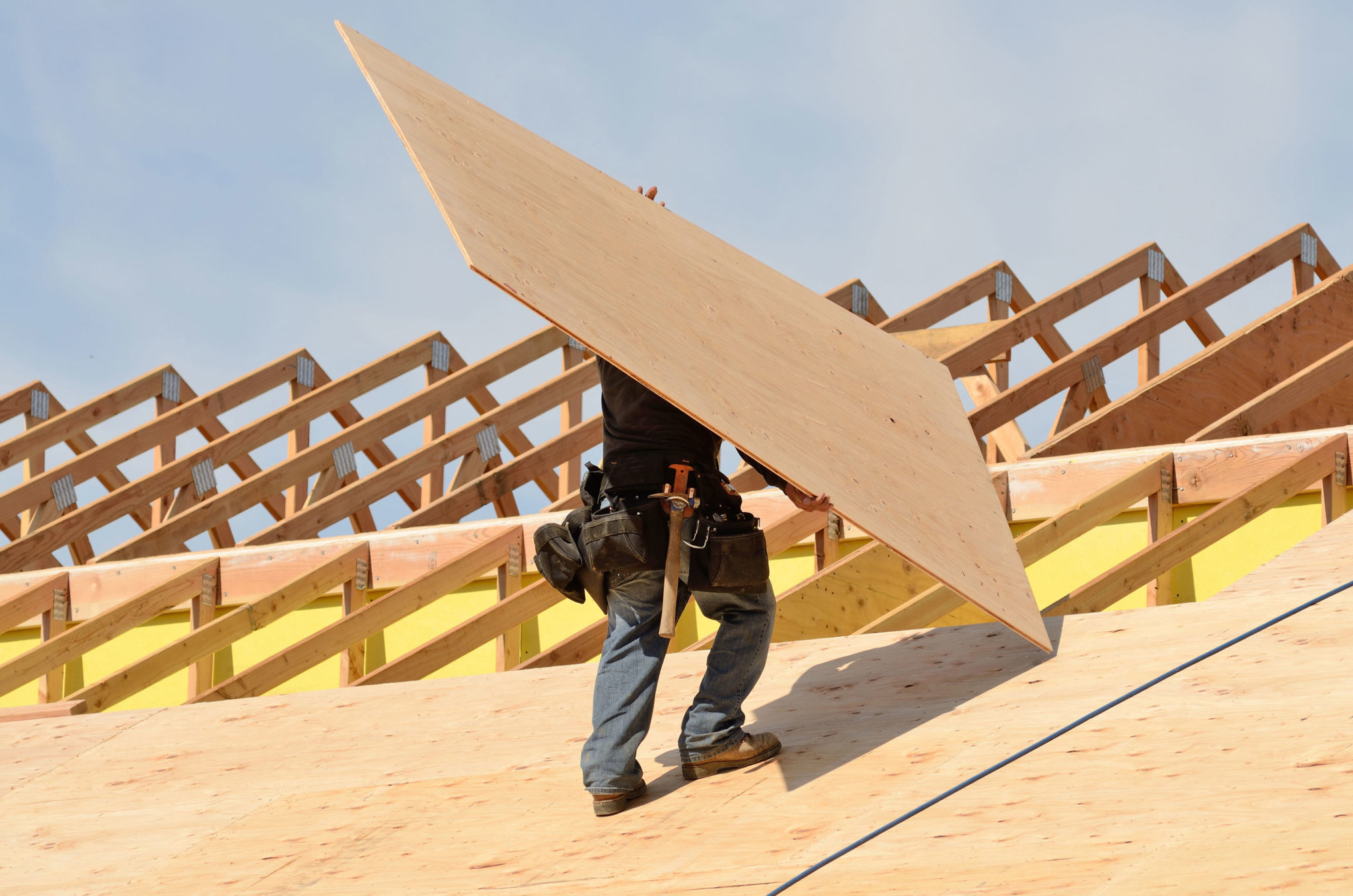
Some roofs are easy shapes, like a long gable roof on a bungalow with one big rectangle at the front of the house and a similarly sized one at the back of the house. A simple measurement of the length times the width and you’re done. But then, there are complex roofs with a combination of shapes and planes and surfaces — rectangles, triangles and maybe a trapezoid “for good measure.” Whatever the shape or complexity of your roof, the goal is the same: measure the area of all the surfaces and add them together to get the total area.
Another option is to measure your home’s top floor’s square footage or, more correctly, the attic floor area. If you use this method, you’ll need to factor in the slope of the roof. For example, a very steep roof on a 1,000 square foot attic will need more shingles than a lower sloped roof on the same sized attic.
Your roofer will know that steeper roofs use more shingles than lower sloped roofs, for the same house size, and there are established slope multiplier factors to make this calculation simple (see Table below). Using this value and allowing for the additional roof area overhangs at the soffit, you can get a decent approximation of the roof area without going on the roof.
Roof Slope
| AREA/RAKE CONVERSION* (ROOF PITCH FACTOR) | |
|---|---|
| SLOPE (INCHES PER FOOT) | AREA/RAKE FACTOR |
| 4:12 | 1.054 |
| 5:12 | 1.083 |
| 6:12 | 1.118 |
| 7:12 | 1.157 |
| 8:12 | 1.202 |
| 9:12 | 1.250 |
| 10:12 | 1.3052 |
| 11:12 | 1.356 |
| 12:12 | 1.414 |
To use the table, simply multiply the projected horizontal area by the conversion factor for the appropriate roof slope. The result is the actual area of the roof.
With recent innovations in technology, a newer roof measurement option involves satellite and/or drone images, which, when properly calibrated, can yield an accurate roof area measurement. One such service is available through EagleView Technologies. Roofers can use these tools to save time preparing roof area estimates and can even export the information in the form of a job quote to homeowners.
Roof areas are generally referred to in the roofing industry using a term called a “square,” which is simply 100 square feet of roof area. While this area can also be measured in metric units (square meters), imperial square foot units are most commonly used and are solely referenced in this blog.
Asphalt shingles are typically packaged with this in mind, but if a package of shingles covered an entire 100 square foot square, it would be too heavy to handle. So, most popular shingles are sold such that three bundles are needed to cover one square of roof area. But be careful — not all shingle brands are packaged three bundles to a square! Read the label carefully, as some brands need a bit more than three bundles to cover a square. Specialty shingles, such as IKO Armourshake, are heavier and therefore packaged to cover 20 square feet per bundle, or five bundles per square.
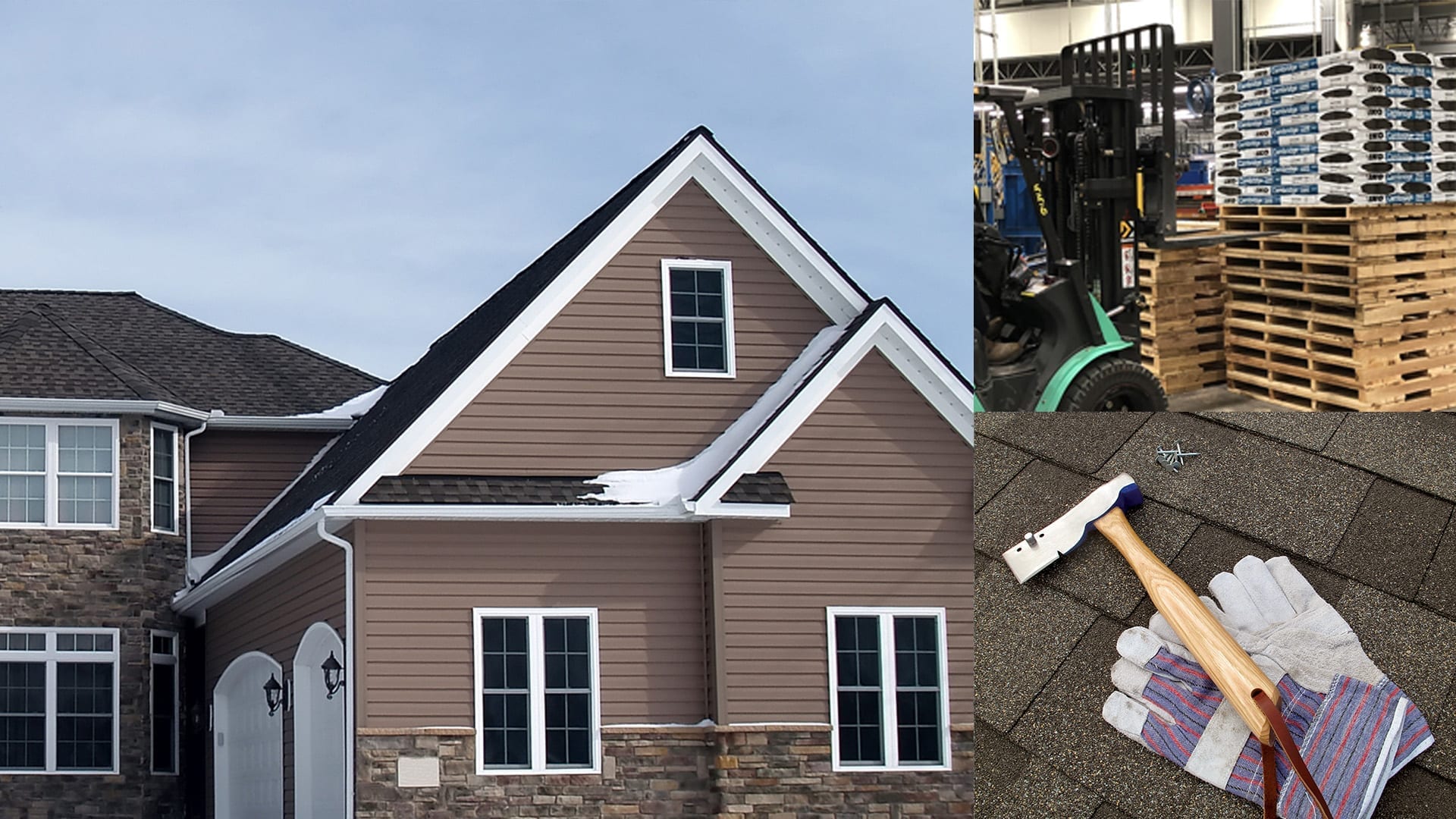
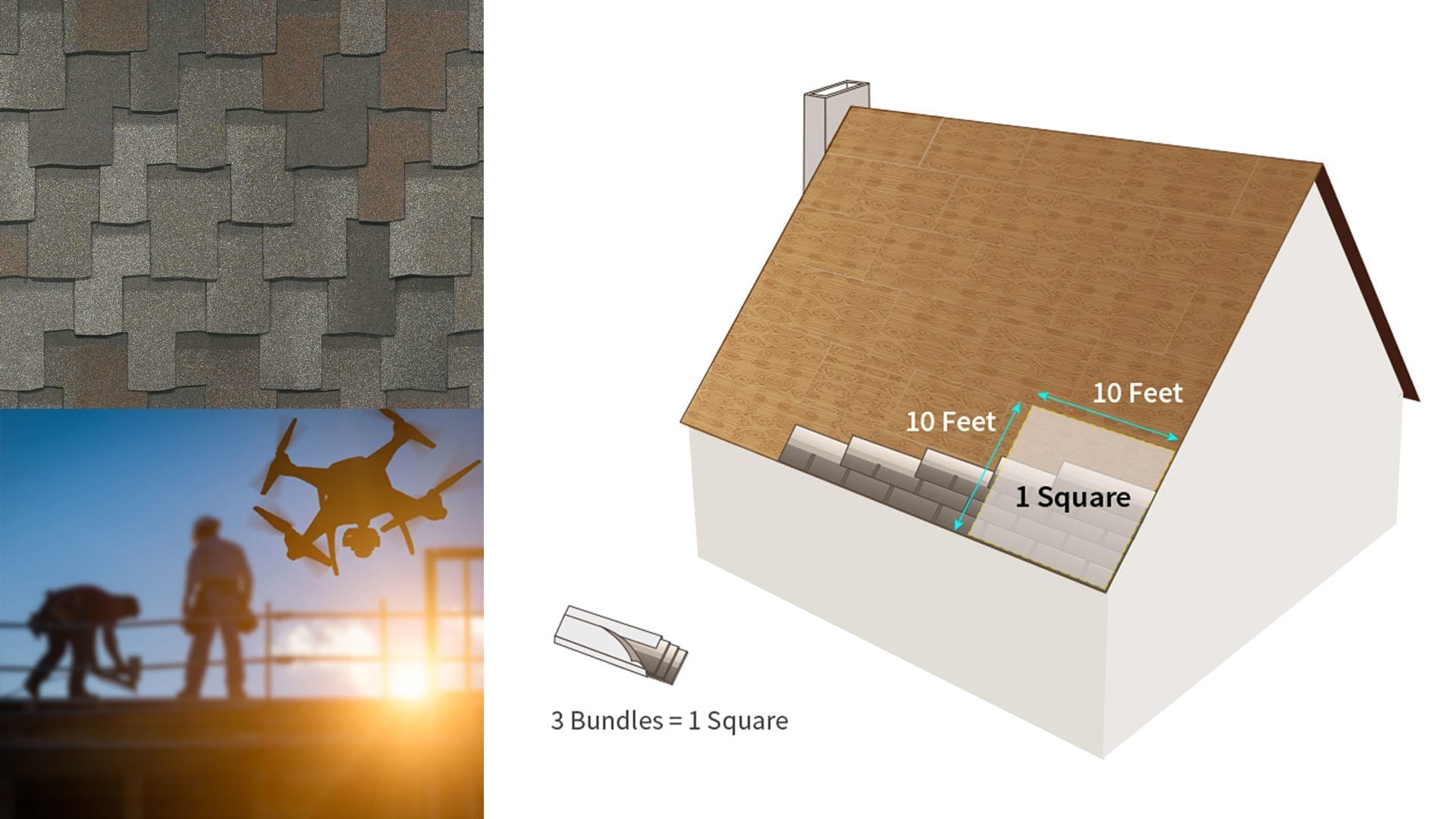
How Many Bundles Of Shingles in a Square
You can’t merely go by the number of shingles in a bundle since shingle size and coverage vary from one brand to the next. For example, if Brand A has 20 shingles in a package, but Brand B has 26, it could be that the Brand A bundle covers more area. The key dimension you need to look at is the area covered per bundle. By law, this information must be displayed on the shingle wrapper so consumers know how much product they’re getting.
The Handy Chart Below Shows You the Average Coverage Area Per Bundle in Square Feet for All IKO Shingle Brands.
| SHINGLE COVERAGE PER BUNDLE | ||
|---|---|---|
| IKO SHINGLE PRODUCT | COVERAGE PER BUNDLE (SQUARE FEET) |
NUMBER OF BUNDLES (PER SQUARE) |
| Crowne Slate[tm] | 25 | 4 |
| Armourshake[tm] | 20 | 5 |
| Royal Estate[tm] | 33.3 | 3 |
| Cambridge[reg] / Cambridge Cool Colors[tm] | 33.3 | 3 |
| Dynasty[reg] with ArmourZone[reg] / Nordic[tm] with ArmourZone[reg] | 33.3 | 3 |
| Marathon[tm] Plus AR[tm] | 32.3 | 3 Bundles + 2 Shingles |
- All values shown are approximate.
- It’s worth noting that the laminated shingles in IKO’s most IKO’s in Architectural and Performance lines, IKO Cambridge, IKO Dynasty and IKO Nordic cover a full third of a square with each bundle! Not all laminated shingles on the market can make this claim; so, when shopping around, make sure you’re comparing coverages to get the best value for your roofing dollar.
Now that you know how many bundles of shingles will be required, realize that there are other roofing material needs to consider. While the measurement for the shingles will be in area (square feet), most roofing accessory products will be measured in length (linear feet). Your roofing contractor will therefore also need to take note of select other roof dimensions, such as the total eave length, total length of all valleys and length of all ridges and hips in order to properly calculate the accessory roofing materials for the whole job.
Eaves Protection
The linear feet of eave length will be needed so that enough rolls of eave protection membrane will be supplied. For most roof constructions, the self-adhering eave protector is applied in one width of material, so the linear dimension of eaves is all that’s needed. For material ordering, a roll of IKO ArmourGard[tm]or IKO StormShield[reg]Ice & Water Protector is 65 feet long.
Starter Strips
The total eave length can be added to the total length of all rake edges to get the total linear feet needed for drip edging. This same measurement is used to calculate the amount of starter strip shingles you’ll need. IKO Leading Edge Plus[tm]shingles are the ideal starter strip, and a bundle covers 123 linear feet.
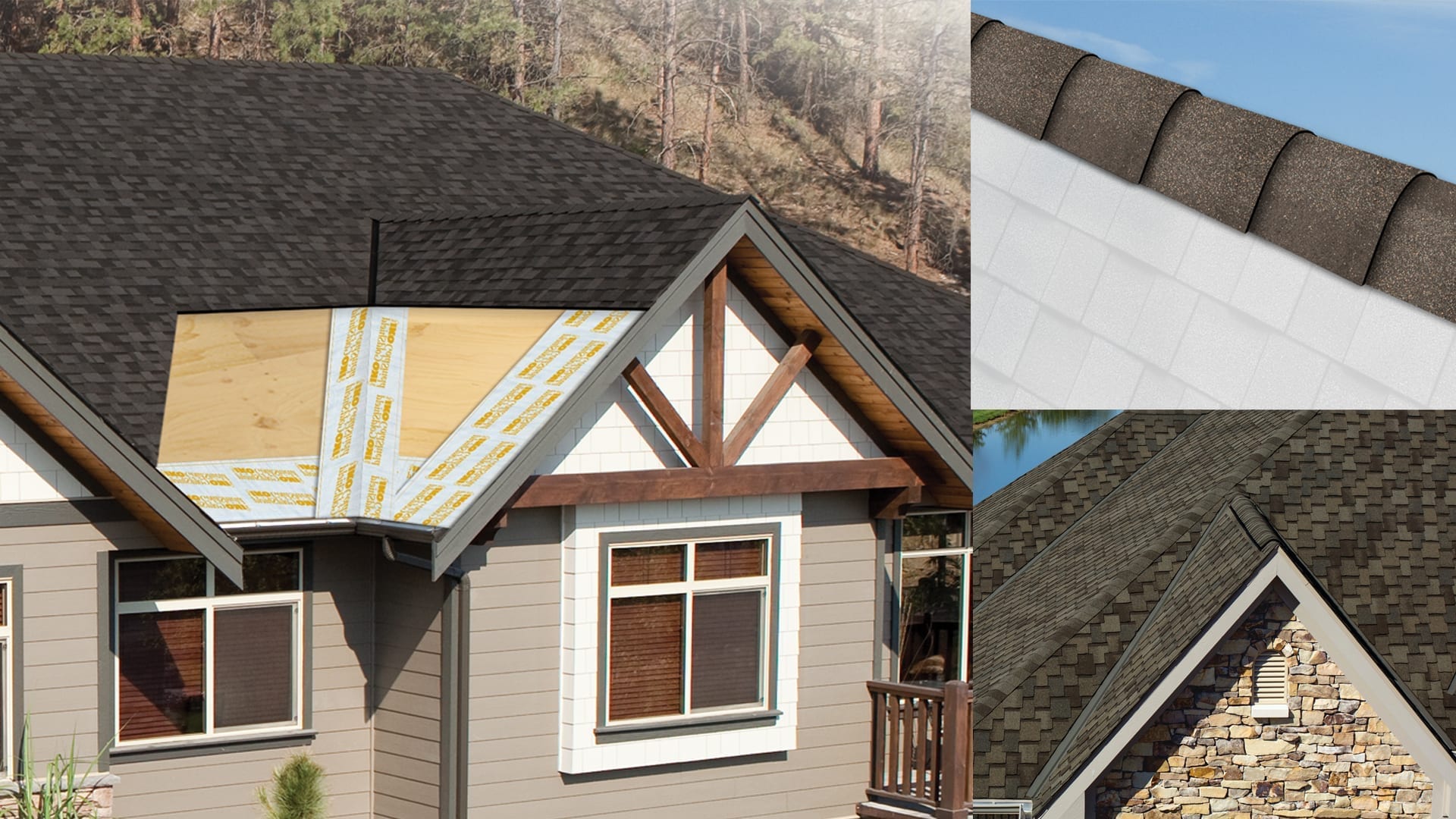
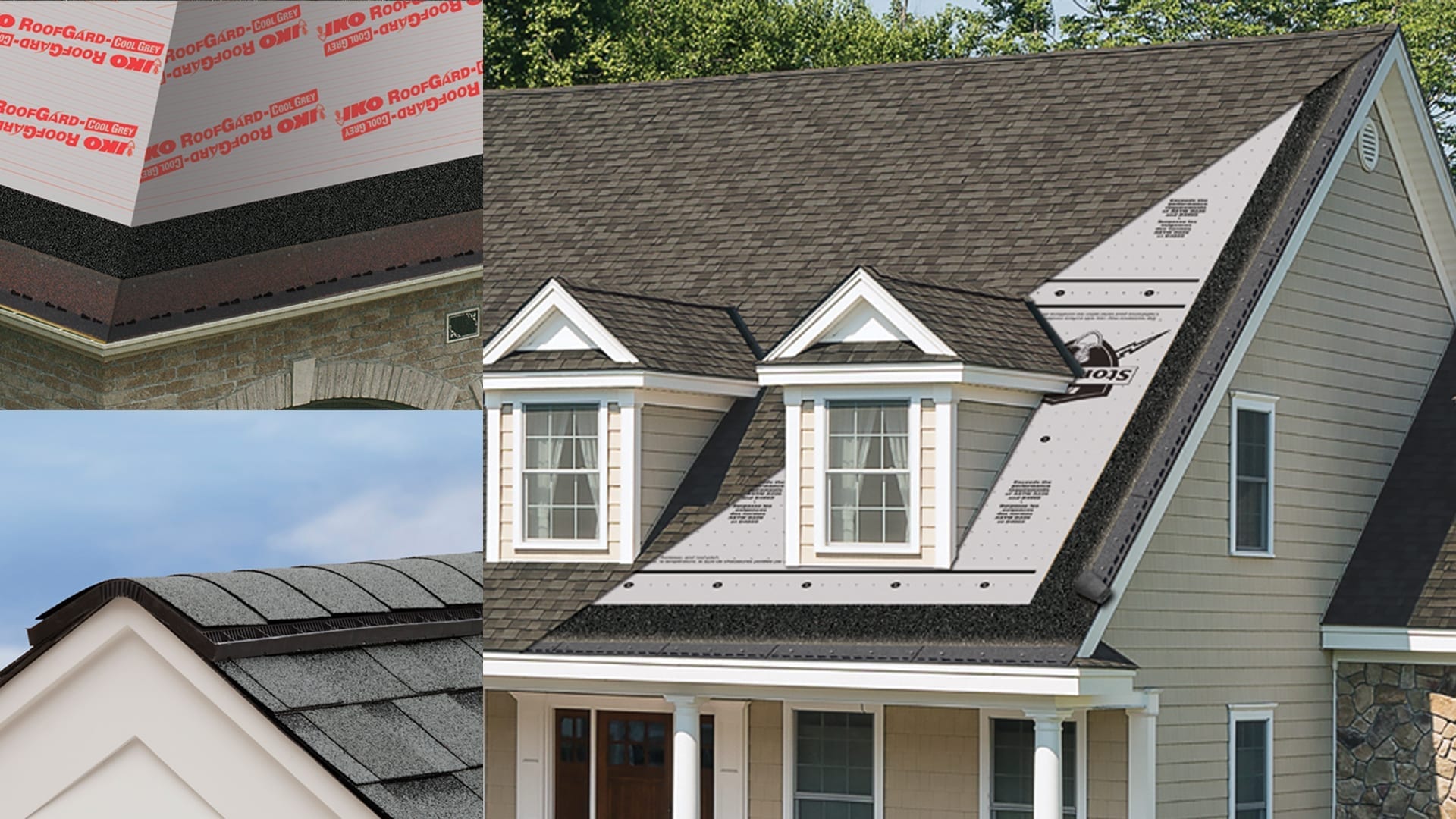
Calculate Underlayment Area
Once the eave starter amount has been determined, the total area of underlayment can be calculated simply by subtracting the area that will be covered by the eave starter from the total roof area. Since today’s synthetic roof underlayments, such as IKO StormTite[reg] are packaged in a generous roll area of 1,000 square feet, two or three rolls should handle most roofs.
Valleys
Depending on the roof geometry, valleys may be present on the roof, and, if so, the total linear feet of the valleys will need to be measured so that enough valley flashing can be delivered. Since IKO’s eave protector membranes are recommended for valley applications, the valley membrane requirements can simply be added to the eave membrane requirements.
Ridge Lines and Hips
While only some roof designs will have valleys, all sloped roofs will have at least a ridge line, and many will have hips. These need to be finished with capping shingles, which can be cut from the field shingles in some cases, but are more likely to be capped with shingles specifically made for this purpose.
Hip and Ridge Shingles
IKO offers the following lineup of hip and ridge shingles. Their associated coverage in linear feet is shown.
| HIP AND RIDGE SHINGLES BUNDLE COVERAGE | |
|---|---|
| IKO CAP SHINGLE PRODUCT | COVERAGE PER BUNDLE (LINEAR FEET)* |
| Ultra HP[reg]/Ultra HP[reg] IR | 20 |
| Hip & Ridge 12[tm] | 36.5 |
* All values shown are approximate
How Many Shingle Bundles Fit on a Pallet?
Those roofers who store shingles for future jobs may find it useful to know how many shingle bundles fit on a pallet. The answer varies depending on the specific product. Here’s a handy chart that shows you how many bundles of each IKO product will fit on a standard pallet.
| SHINGLE BUNDLES PER PALLET | ||
|---|---|---|
| IKO SHINGLE PRODUCT | NUMBER OF BUNDLES THAT WILL FIT ON A PALLET | |
| Crowne Slate[TM] | 60 bundles | |
| Armourshake[TM] | 36 bundles | |
| Royal Estate[TM] | 52 bundles | |
| Cambridge[reg]/ Cambridge Cool Colors[TM] | 56 bundles | |
| Dynasty[reg] with ArmourZone[reg] / Nordic[TM] with ArmourZone[reg] | 56 bundles | |
| Marathon[TM] Plus AR | 56 bundles | |
What About Shingle Waste?
There’s one last shingle calculation that is best left to an experienced roofing estimator, i.e., how much shingle waste is likely to be generated. While there are some industry rules of thumb (e.g., smaller roofs tend to have a higher waste factor than larger roofs), it is difficult to accurately predict the percentage of shingle waste.
However, you can count on about 10 – 15 percent as a general range. When the roof is done, it may be that the number of bundles ordered was perfectly calculated, and there isn’t a single shingle left over. But, usually, there will be a bundle or half a bundle remaining. If so, it’s a good idea to keep this bundle in a dry, protected place in case it is needed for future roof repair work. IKO’s “Blueprint for Roofing” video will show you how the pros do it.
